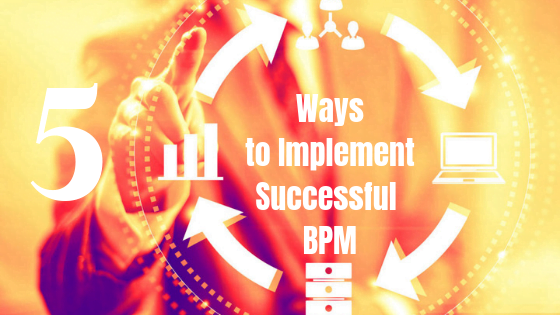
Recognizing Business Process Management and devising a strategy beforehand is crucial to successful BPM implementation, but after it has been correctly implemented the benefits could be enormous.
A specific BPM implementation typically begins by specifying the actions involved in a job procedure so that you may determine what could be improved, what could be automated, and how it can be monitored. With the proper BPM software alternative, BPM may be totally customized, which can be critical since no two organizations function the exact same, and differentiators are secrets to validity.
Business Process Management (BPM) and workflow automation are two integral components of process optimization. BPM involves a comprehensive approach to managing and improving organizational processes, aligning them with strategic objectives. It encompasses the entire process lifecycle, from design to continuous improvement. On the other hand, workflow automation software focuses on automating specific tasks within a process to enhance efficiency and reduce errors. While BPM sets the strategic direction, workflow automation provides the means to execute improvements effectively. Both are essential for successful BPM implementation, leading to increased productivity, reduced costs, and improved customer experiences.
1. Qualify Your Aims Beforehand
Before implementing BPM, you need to ask: “Why do we do so ?” The Solution should cover things such as:
• What if you come out of this procedure?
• Can the procedure fulfill its objectives?
• What changes would enhance those elements of this procedure?
Many organizations opt to begin small, using a procedure they understand they can get their arms around. Succeeding with a pilot BPM implementation builds courage and confidence to enlarge BPM to other procedures.
2.Obtain Buy-In from Up and Down the Org Chart
Obviously executive and management order and acceptance are significant. However, so is buy in the front-line users that will take care of the procedure daily. Everyone involved must understand the aims of BPM and ought to feel comfortable providing comments through preparation and execution. Teach and communicate. Some might be set off BPM since it threatens the status quo. Learn what their issues are and also make clear the benefits that BPM is expected to bring. Communicate with your IT staff from the start. Even if they are not directly responsible for designing workflows, they will need to understand whether any changes to IT infrastructure is going to be required.
3.Select Your BPM Software Carefully
That”ideal” BPM software they are selling might not be perfect for your company in any way.
In the end, you and your staff are the only ones that will determine that the BPM software option is the best one for your requirements. As lots of outsiders have an opinion on which sort of car you need to drive, there are lots of people prepared to inform you of the BPM applications you want. Your applications should allow easy communication and cooperation, and it should permit you to specify workflows without needing to employ a developer or pull on someone from the IT team. It also needs to give you comprehensive customization options, as your procedures are exceptional, and your BPM solution has to be uniquely executed in light of those.
4.Monitor and Measure After Implementation
BPM is constructed on a foundation of commitment to constant improvement. So that means that you can not simply implement BPM and walk off. Know your score performance prior to implementing BPM, so you’re going to have something against which to measure your own operation subsequently. Strategy for documentation of BPM execution from the beginning. Know exactly who’s influenced by which point in a procedure and request opinions from them. If you track, quantify, and fine-tune in a manageable, strategic style, you iteratively create your BPM procedure better and prepared the company to enlarge BPM to other procedures.
5. Don’t Think of BPM as a “Project”
Ultimately, do not think about BPM as a job with a definite start and end. Yes, there are definite measures required, but BPM is much more about travel toward process optimization along with a way to make that happen. A”job” is too limiting for what BPM really is, and it is a method for anticipating and handling changes as conditions change or technology permits. Implementing BPM requires preparation, communication, and hard work, but after people see their ideas come to life and procedures become optimized, and they will comprehend why BPM is different and what it really does.
Conclusion
BPM is designed to help your organization gain business value and hone its competitive advantage. It takes hard work and planning, but most rewarding jobs do. Nividious provides open-source Business Process implementation software that enables your team to specify processes intuitively with your goals in mind. It includes an impressive group of built-in applications, and because it’s open-source and is accompanied by an active user community, it may be perfectly tailored for your business case.



Leave a Reply